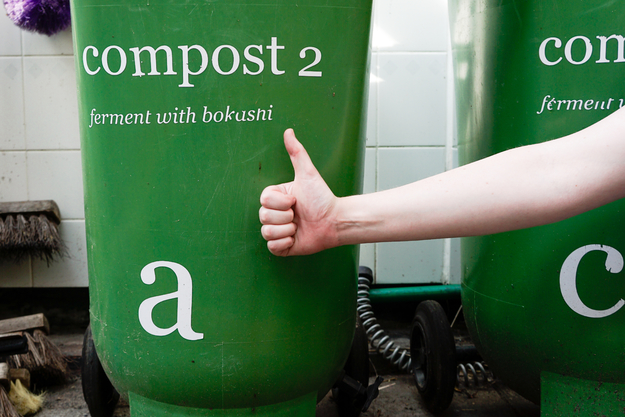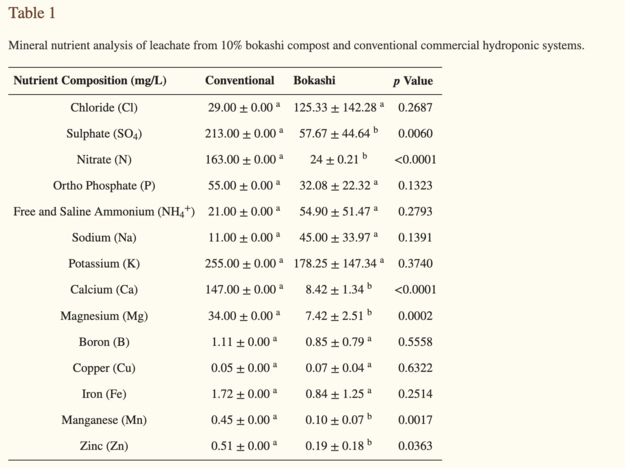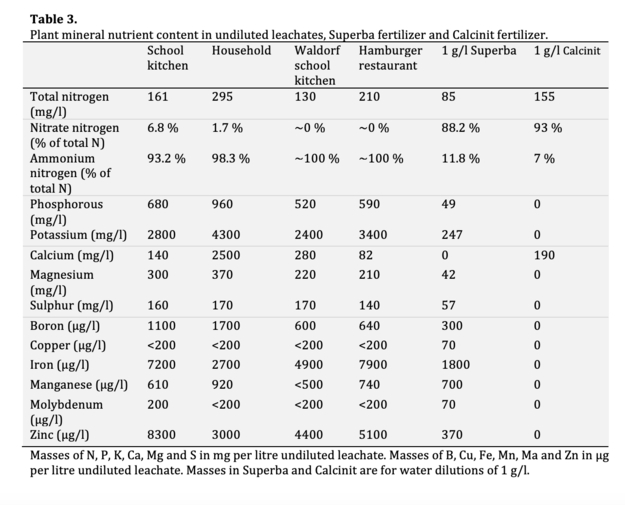What is Bokashi?
Bokashi is a Japanese composting process that uses microorganisms known as 'Bokashi bran' to ferment organic food waste and create a fertile compost that will enrich your growing medium (source). Bokashi ferments in an anaerobic environment which means no oxygen should be present. If we use the system correctly, we end up with two products: the first is a nutritious mix of fermented organic matter that we can add to our compost heap, and the other is the Bokashi liquid, also known as Bokashi tea.
Using Bokashi would be a very interesting option as it would bring us one step closer to a circular gardening process. By using our kitchen and gardening waste, we could feed the plants that we later use in the kitchen.
Which nutrients are necessary?
Plants require at least 14 mineral elements for their nutrition. These include the macronutrients nitrogen (N), phosphorus (P), potassium (K), calcium (Ca), magnesium (Mg) and sulfur (S) and the micronutrients chlorine (Cl), boron (B), iron (Fe), manganese (Mn), copper (Cu), zinc (Zn), nickel (Ni) and molybdenum (Mo) (source). These are generally obtained from the soil. In our aquaponics system we obtain a nutrient mix that is rich in Nitrogen from the excrements of the fish. However, this nutrient cycle in aquaponics is not closed. We need to add additional store-bought nutrients like magnesium, phosphorus, calcium, potassium, iron, manganese, and molybdenum on a weekly basis. These all come from different sources, some of which not are very sustainable ones (eg. phosphate is mined and not highly available, and iron is very energy-intensive to produce in water soluble forms).
Nutrient composition compared to commercial fertilizers
The composition of your bokashi compost depends heavily on its input. You can add virtually all organic materials, like kitchen waste, garden waste, coffee grounds, meat/fish, manure and so on. Our waste will consist of plant based kitchen waste, garden waste and coffee grounds. There are not many nutrient analyses of the nutrient composition of bokashi tea, even though its benefits are widely acclaimed. In the following sources (1,2) we found analyses that give a good impression (see the images below). From this we can conclude that especially nitrogen is not highly available in bokashi tea. Furthermore, other key nutrients like calcium, magnesium, and potassium are present in much lower concentration as compared to commercial fertilizer. On a positive note, micronutrients like iron, manganese and molybdenum, which we currently add to our system manually, are present in Bokashi tea.
Bokashi tea is usually diluted as it’s quite an acidic mixture. The concentration of nutrients therefore also depends on the degree of dilution. It is recommended to use a dilution of 1 or 2%. However you could use a less diluted tea if you counter the acidity in some way. You could do this by using wood ashes that we also produce in quite high amounts (which would also add a considerable amount of calcium to the system).
In short, we may not reach the demand of all the essential nutrients just by using bokashi tea. However, this was also not the case in our aquaponics system. A combination of bokashi with commercial fertilizers could be a good option.
Practical review
The last thing to consider are the practicalities of producing our own fertilizer. In an average week we produce around 120L of food-scraps from the kitchen. If we add the garden clippings and coffee grounds, this number easily doubles. You can collect bokashi tea every ⅔ days. As a rule of thumb, 1kg of organic matter produces around 1L of bokashi tea in this timespan. We don’t know exactly how much one full bin of organic matter weighs, but to stay on the safe side: we can assume a production of around 100L of bokashi tea on a weekly basis if we use kitchen food-scraps, garden clippings and coffee grounds. However, we can’t be sure of this number until we try.
When we would add 100L of bokashi tea to the hydroponics system on a weekly basis, we would add less calcium, nitrogen, magnesium, iron, and manganese to the system compared to how much we currently add in our aquaponics system (this is based on calculations with the data from the two articles (1,2) and the historical data from our aquaponics nutrient log). We would only add potassium and phosphorus in higher amounts compared to the current situation.
Apart from this we bump into another issue, namely the production of quite high amounts of solid fermented organic matter. If we use kitchen waste, garden waste and coffee grounds we could fill 2 green bins (240L) per week. This needs to ferment for around 3 weeks before it is well fermented. When fermented it should still be added to our compost heap because it is not ready to use compost (even though bokashi is often referred to as a way of composting). It requires a lot of manual labor to mix and transfer the organic matter to the compost heap.
Furthermore, the management of the bokashi system in general requires a bit of work. The green waste should be chopped in pieces of roughly 5 cm, the bokashi bran needs to be added each time fresh material is added, and the bins need to be cleaned after each cycle. Someone also needs to keep track of how long each bin has been fermenting. This requires both a lot of manual labor and know-how about the system. Since people generally work in the greenhouse for short periods, this could result in a knowledge-transfer issue.
Summary
Pros:
- Most circular solution: closing our nutrient cycle by using our kitchen and garden waste
- Contains trace elements like boron, copper, manganese, zinc and molybdenum
- Liquid fertilizer, so easy to add
- Nice research topic. We would be able to fill a knowledge gap: the nutrient composition of a bokashi tea that is made from plant based input is not easy to find in literature.
Cons:
- We will probably not be able to produce large enough quantities to meet our nutrient demand.
- This means we would need to add extra nutrients
- We don’t know the exact nutrient composition of the bokashi tea, so water testing will become increasingly important
- Very acidic - need to keep track of pH changes
- Extra work and maintenance (which could be the responsibility of the aquaponics intern)


